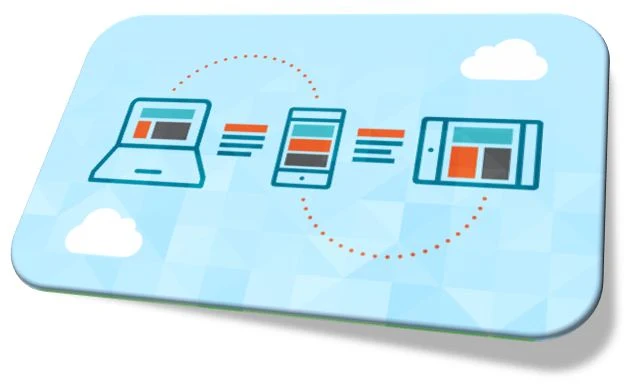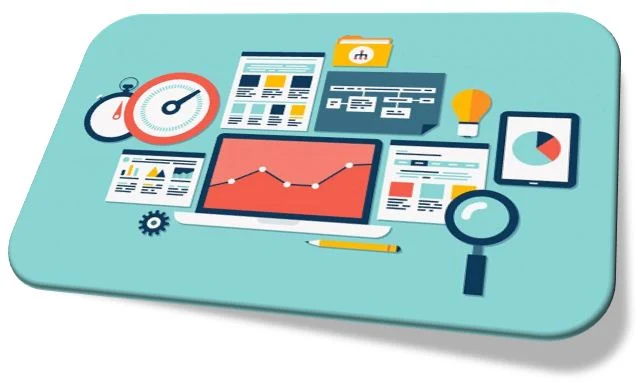Step by step process of mobile app development from scratch, If you aren’t a developer yourself, creating an app may cost you far more than you know. To spare yourself from paying more than you should, a good rule of thumb is to know the steps that will go into developing your application. Here are some steps that will help you visualize and ultimately create and market your application -
Step One - Start with an Idea
If you already have an idea for a mobile app, skip to Step Two. If not, read on.
Every great project starts with an idea. And the same applies to mobile app development.
Ask yourself, what is it that you need to develop for? The answer is related to why people look for ideas in the first place - to solve problems. Someone thought that people would love getting from one part of the city to the next while beating traffic and invented the subway system. Someone thought that people would love sitting in the park and watch the squirrels run by so park benches were invented.
To get an idea for an app, start looking for problems first. Let’s explain this with an example. Are you looking to expand the audience for your ecommerce website? Create a mobile app that makes it easier for users to order products on the go.
Step Two - Identify the Need
Once you have an idea about the type of application you want, the next step is to define the need. For example, let's say that your idea is an app for your fast food store. Why do end users need it? Based on the need, your application can be anything from a food ordering application or a gaming app which fans can play for a chance to win discounts or free meals in your store.
Of course, the application can be for your need as well. For example, your need may be to get your brand noticed faster than traditional modes of advertising allow. In this case, you might be looking for a product that has the potential to go viral online.
Step Three - Determine the Design
When it comes to app design, the first thing that comes to mind is how your target audience or end users will use it. Sure, you may have a basic idea about the type of design you need; but if it is only based on your perception, you might want to go back to the drawing board.
To make your product meet your goals and resonate with your audience, keep these metrics in mind -
- Screenflow - The screen flow of your app determines how users are going to navigate between screens. Ease of use should be top priority here. But keep in mind; you will have to test different layouts first. This will help you determine where people are getting stuck and mitigate accordingly.
For example, if you see people are abandoning their carts at checkout, maybe a change on how product information is structured can mitigate it.
- Dropoff rate - The drop off rate shows you users that drop off at certain pages. There can be several reasons why this happens. Analyze the why and take the necessary steps to resolve it. For example, if your users are dropping off after clicking on a particular product page, the reason could be a broken link.
- Onboarding - Your onboarding process can make or break your app. Getting users to sign up is easy but promising that they will have a good experience is a whole other ball game. Think of onboarding like the first time you meet a person. You want to make a good impression so you do everything you can to show yourself in a good light.
The primary purpose of this process is to accommodate users and familiarize them with your application.
Step Four - Lay out the Features
If you want your app to have the potential to go viral, it must be something that people want to use. This is where the features come in. To ensure that your UX (user experience) flows, create a wireframe. The wireframe will form the base of your design process. Think of it like a skeletal representation of your app that outlines the content placement, navigation and functionality of your app. This is when your ideas will start taking shape as an application. To make the most of your wireframes, keep these tips in mind -
- Keep it Simple - This means skipping colors. Colors can come in handy in coordinating a layout but they can also distract you from the experience that you are trying to create.
- Get the Team Involved - Two heads are better than one and the same applies to creating good wireframes for your app’s UX. Seek feedback from your team members regarding how the wireframe will look and perform on different devices. This will improve on the effectiveness of your app. Working as a team will open your mind into new ideas and new possibilities.
- Keep it Consistent - The faster users can get to a resolution from your app, the better the user experience. Don’t forget to keep the experience consistent in aspects like content and delivery.
- Sketch it out - Many designers find that putting their ideas on paper as an effective resource. A sketched wireframe gives you a rough draft about what different pages of your app might look like. It also gives you an idea about the visual hierarchy and content placement.
- Keep your Vision and Goals in Mind - Idea flow on paper, so it is pretty easy to lose perspective on what you want an application to achieve. Keep the flow of your UX in mind and map it out from the first action to the last. This will keep you closer to your goals.
- Do it as a Team - As mentioned, two heads are better than one, especially when it comes to brainstorming ideas. Working as a team will give you more ideas about how you want your UX to work and UI (user interface) to look like.
Step Five - Start Testing
Once your app is designed and developed the next step is to test it. Keep in mind, you application must deliver in aspects like functionality, performance, security, usability and compatibility. Keep the following in mind when testing for each of these factors.
- Performance - As mentioned, UX matters a lot in your app’s reception. Testing for performance means ensuring that the app performs well under a variety of conditions and performance requirements.
Amongst performance tests, stress testing is important. The basic premise of stress testing is to determine issues that may arise under extreme conditions and to eke out bugs that may compromise the design and functionality of your product like -
- Online attacks like DOS that may lose or corrupt data
- Application sequences fail to respond due to a lot of users logging in at once
- Unexpected outages
Here are some examples that can help you stress test your app -
- Functionality - While testing this phase, focus on whether all mandatory fields work as required. This can include everything from the sign in functions to how different components function when you click on them. For example, this may include a minimizing function that activates when there is an incoming phone call in the app’s calling service. For this, a simple test would be to call from another phone.
- Security - If you overlook security, your app is bound to fail. The level of security you imbue in your app has a direct impact on your bottom line and brand perception. Here are some reasons why -
- A lack of security can cost you and users - How many times have you heard how a breach through a seemingly simple software task (like admin login) lead to a security issue and allowed malicious hackers to take off with valuable documents? Every mobile app is vulnerable to security threats and your application is no different whether it is for business users or regular consumers.
Who has the most to gain from this? A business can gain an advantage if it manages to steal competing companies for a product launch before it happens. When it comes to consumer apps, some companies are willing to shell thousands of dollars for information about consumers since it can give them edge in designing future marketing plans with these users as their target audiences.
- It can lead to a loss of reputation - If metrics like security isn't on your list of priorities, your reputation can be jeopardized when there is a security breach. And it will only snowball from there. The users of today take any complaints online and if you have a social media page for your business or app that is where most of these complaints will end up. This can deter other users from downloading your app. If the app is to be used for business, a breach may lead to a lawsuit.
- Get Feedback - No app is perfect. A beta test will give you the feedback you need to iron out any kinks, bugs and other issues that might hinder usability. Getting friends and other acquaintances on board can give you feedback faster since you will be communicating with them directly.
And the best way to get it is to establish a feedback loop, with messages that ask users to contribute, right in the app itself. Make sure that your users are diverse. For example, they can be regular users with no technical experience or software designers or developers who have experience creating apps. A technically challenged audience will help you make your UX flow better while a technically experienced audience can give even deeper insights.
Step Six - Launch your App
Once you have successfully developed your app, the last step is to launch it. Depending on the platform you developed for, you can publish your app on different app stores. For example, Android and iOS applications can be published on Google Play and the Apple App Store respectively.
- Launching on Google Play - Google Play is an online Android store for downloading and purchasing digital books, movies, music and of course applications for Android powered tablets, smartphones and other devices.
- Launching on App Store - Like the name implies the Apple App Store is an online store for downloading and purchasing applications for Apple powered devices (like the iPhone) and computers.
Before you launch your software on any of these stores, make sure you go through the submission guidelines first. You don’t want to be held back with a rejection, no matter how small the infraction especially if you have your marketing material all lined up to go after publishing.
Step Seven - Post-Launch Marketing
At this point, launching an app might seem easy. Just publish it on the App Store and people will download it. Right?
Wrong! Even the best apps have trouble getting recognition without marketing. However, the good news is that you don’t need to tap into your savings to ensure your own gets noticed. Here is what you need to do -
- Determine Target Audience - Who will be using your application and what value will they receive from it? Shape your marketing strategies around your target audience. For example, if your app helps people order electronics online, find out everything you can about the people who are likely to do so and market it to them.
- Who is your Competition? - If your app offers the same services like another one, you are going to have some competition. These might be competing businesses which will be trying to get their applications downloaded faster than yours. At this point, your aim should be to make your marketing campaign stand out and reach more people faster.
Creating an application from scratch can be a challenging experience especially if you are new to it. The easiest way to do is is to adopt a methodical approach, lay down your ideas, test often, resolve any problems before they become overwhelming and promote your app to get it noticed before your competition beats you to the downloads. The steps mentioned above will help you keep the whole process on track from the beginning till the end.




